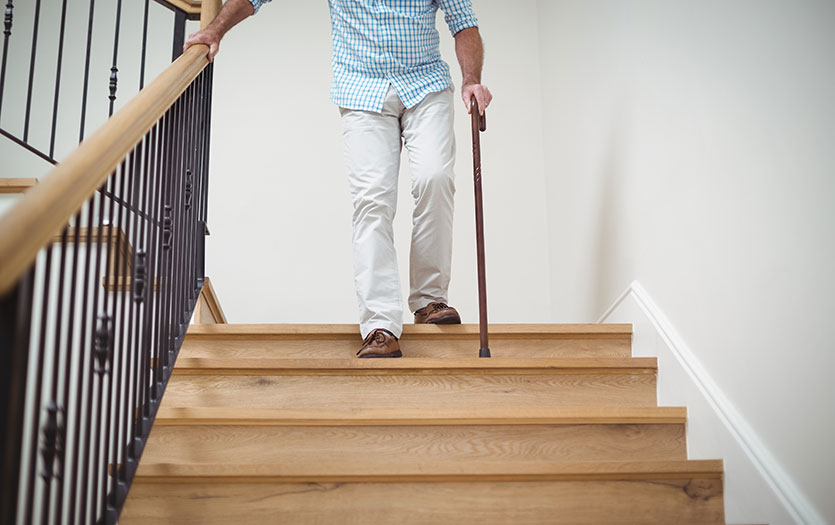
There’s a common notion that high blood pressure only affects adults, but it can affect anyone at any age. More recently, providers are looking at children’s health, including their blood pressure, to determine who might be most at risk for developing severe health conditions in the future. Vimal Jayswal, MD, PPG – Pediatric Cardiology, answers our questions on this growing health issue and shares his insights into what parents and caregivers can do to set their children up for success.
What is high blood pressure?
High blood pressure, or hypertension, generally refers to how hard the blood is pushing against the artery walls. Individuals with high blood pressure will have an elevated reading. For children, there are two main types of hypertension, which include:
- Primary hypertension: Also known as essential hypertension, this type of high blood pressure is similar to what we see in adults. It is usually idiopathic and rarely due to a history with a first-degree family member.
- Secondary hypertension: This type of high blood pressure is more common in younger children due to specific conditions like kidney problems, such as recurrent urinary tract infections (UTI), thyroid problems or certain medications and anxiety.
Additionally, there is one other form of hypertension we often see in children, called:
- White Coat hypertension: This type of high blood pressure is anxiety-related. It occurs when a child’s blood pressure readings are high at the doctor’s office because they are anxious but return to normal once outside the office.
How is blood pressure typically measured in children?
Providers base normal blood pressure values for children and adolescents on the child’s age, gender and height. A proper fitting cuff is essential for accurate measurement. Also, a child must have three elevated readings in three different settings before diagnosing hypertension, stage 2 hypertension, or symptomatic hypertension.
Typically, we define prehypertension as blood pressure in the 90th percentile but less than the 95th percentile (for children younger than 12 years old) or 120/80 mm Hg or greater (for children older than 12 years old). Hypertension is defined as blood pressure that is more than the 95th percentile for a child’s specific age, gender and height.
How common is hypertension in children?
Unfortunately, with the ongoing pandemic and rise in obesity due to less physical activity, a rise in screen time and unhealthy food choices, we are diagnosing more and more children with high blood pressure at a younger age.
What are the warning signs of high blood pressure in children?
Typically, the signs and symptoms of high blood pressure are nonspecific and tend to be asymptomatic. So, parents and caregivers may not notice anything until a doctor’s visit or well-child exam. With that said, some nonspecific symptoms could be an indication, including headache, exercise intolerance, shortness of breath with activity and, very rarely, chest pains.
What health risks does high blood pressure pose to children?
Hypertension is an important factor to pay attention to because it is a precursor for early heart disease or stroke. Let’s look at an example. Take, for instance, a 14-year-old who is overweight and has high blood pressure. When they are 35, maybe 40 years of age, they will most likely be at increased risk for a heart attack, stroke or sleep apnea. The long-term effects would have severe cardiovascular impact, stroke or brain-related issues. Furthermore, most hypertensive individuals are also less likely to be active, causing weight gain and predisposing them to diabetes. All of this is connected and often goes hand-in-hand.
How is the condition diagnosed and treated in children?
The American Academy of Pediatrics recommends taking a child’s blood pressure once they turn three years of age. However, to accurately diagnose a child with high blood pressure, we must also look at the reason for it. The gold standard for diagnosing hypertension in children is something called ambulatory blood pressure monitoring (ABPM). We have the child wear the monitor for 24 hours to get the exact blood pressure measurements when the child is awake, asleep, at school, being active, relaxing, etc. From there, we can assess if the child’s blood pressure is elevated across the board or only at specific times, which also allows us to differentiate between white coat hypertension and a genuine case of hypertension.
The treatment for hypertension in children is conservative at the beginning and focuses on lifestyle modifications first. For example, if we have a patient who is overweight and their blood pressure is slightly elevated, then for the first six months, the primary form of treatment will consist of being more active, making healthy food choices and following the 5210 program. This program encourages children to:
- Consume 5 fruits and vegetables a day
- Limit recreational screen time to 2 hours or less per day
- Engage in at least 1 hour of active play
- Drink 0 sugary or sweetened beverages
With that said, some children may require medications to treat their hypertension, which would be a part of the treatment plan parents and caregivers discuss with their child’s primary care provider.
What can parents/caregivers do to help their child manage the condition?
Parents and caregivers should follow up with their child’s primary care provider and continue any well-child visits regularly.
At home, parents and caregivers should also help their children lead healthy lifestyles by eating a balanced diet, practicing proper sleep hygiene, exercising and, if necessary, following the 5210 program. Additionally, these healthy lifestyle modifications must be a whole family approach to truly be successful.
Final thoughts
Parkview Pediatric Cardiology strives to provide the best care possible to all our patients. Preventative cardiovascular health for children is one of our top priorities, and we are committed to building a stronger, healthier community for all.



